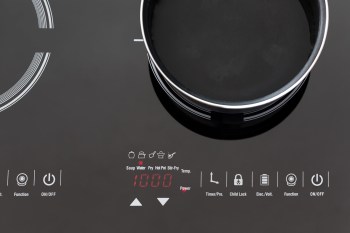One of the best things about summer is the variety of available fruit. Melons, stone fruits, and berries all flourish in the warmer months. But when heat waves hit at the top of the season, fruit crops can become limited and cause "heatflation" — heat-related spikes in food prices.
What's happening?
An early heatwave in July in South Korea drove up prices for a variety of popular produce: watermelons, napa cabbage, radishes, melons, and peaches.
Unfortunately, the extreme heat has caused damage to many fruit crops, including what they call "melted watermelon," where the flesh deteriorates from the heat. Some farmers have resorted to wrapping the melons in paper to prevent sun damage.
The sudden change in weather — from monsoon season to a heat wave — has also increased the demand for produce, according to Fresh Plaza. The Korea Agro-Fisheries & Food Trade Corporation (aT) has shared that watermelons have been the most affected, with a 36.5% increase to $22.60 per melon. Other melons were priced around $7.80, napa cabbage at $3.35, radishes at $1.80, and white peaches at $18 for a 10-pack.
Why is heatflation important?
Shoppers are upset over the inflated prices. One shopper in Seocho, Park Mo (57), said, "The price of watermelon is so high that I can't even eat it once this summer."
Trends are also suggesting that the prices are likely to increase further as the season progresses. A representative from Ajou University said, "While weather is clearly a factor, it's time for the government to consider long-term price management and supply strategy reforms."
Save $10,000 on solar panels without even sharing your phone number Want to go solar but not sure who to trust? EnergySage has your back with free and transparent quotes from fully vetted providers that can help you save as much as $10k on installation. To get started, just answer a few questions about your home — no phone number required. Within a day or two, EnergySage will email you the best local options for your needs, and their expert advisers can help you compare quotes and pick a winner. |
A portion of the South Korean government's $24.6 billion supplementary budget might increase consumer demand; however, this could easily inflate pricing simultaneously.
Heatflation is a global issue. Global food prices are on track to increase by close to 3% by 2035. The food prices in the U.S. have already increased by 25% from 2019 to 2023, according to the U.S. Department of Agriculture.
What can I do to avoid heatflation?
Weather disasters, after-effects of the pandemic, and carbon pollution are all factors of price increases. While 80% of the world's global carbon pollution is from only 57 dirty energy companies, there is plenty of action we can take within our own communities.
|
What's your least favorite thing about summer heat waves?
Click your choice to see results and speak your mind. |
Shopping with a meal plan, purchasing directly from local farmers, and growing your own produce can help out your local fruit pricing. You can also help mitigate risk in your community by wearing a mask when viral infections are increased in your area.
|
💡Solar quotes you can trust
Want to go solar but not sure who to trust? EnergySage has your back with free and transparent quotes from fully vetted providers in your area. To get started, just answer a few questions about your home — no phone number required. Within a day or two, EnergySage will email you the best options for your needs, and their expert advisers can help you compare quotes and pick a winner.
The Cool Down may receive a commission on signups made through links on this page, but we only promote partners we vet and believe in. For more cool tips like this one, check out our solutions marketplace here.
|
In your home, you can lower your carbon impact by switching to a heat pump, an induction stove, and installing solar panels.
Join our free newsletter for easy tips to save more and waste less, and don't miss this cool list of easy ways to help yourself while helping the planet.














